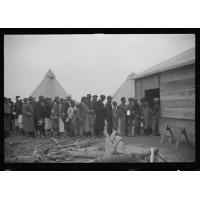It is a matter of perspective. I think analyzing perspective is a powerful activity to do with any grade level of student Pre K - 2 3 - 5 6 - 8 . I would have the students take one photograph at a time and think about what they see for one minute then add a different perspective of the same event to consider what they think is happening. Note how a perspective of the photographer can change your perspective of an event.
Have students consider this as they look at any medium. What is the purpose? Why did the photographer choose this angle? How does the angle of the subject change your perspective? What did you first think? What do you think with the last photograph? Even changing the order of the photographs can change your thinking. bestof
Replies displayed by creation date
Wonderful perspective in these photos  Cheryl Best
. Thanks for adding this idea and album. Also great for high school students.
Cheryl Best
. Thanks for adding this idea and album. Also great for high school students.
I think this would be a good series of photographs to use with any photography class, from elementary through adult learners. It says a lot about how photographers frame and select images. It's a really cogent grouping, and if I get to work with the UArts photography course in the future, I will be sure to use your album. I love how the TPS Teachers Network makes my teaching better!
For a webinar on photography, I liked to use one of Ansel Adam's Manzanar photographs, 
Adams, Ansel, photographer. Manzanar from Guard Tower, view west Sierra Nevada in background, Manzanar Relocation Center, California. California Manzanar, 1943. Photograph. https://www.loc.gov/item/2002695970/.
to ask some of the same questions you ask as well as "What's missing from this picture?" Because Adams took the image from the guard tower, the photograph doesn't show the barbed wire fencing or the guard towers surrounding the camp. Here's a piece from the NPR show Code Switch on 3 photographers' perspectives of Japanese internment camps: https://www.npr.org/sections/codeswitch/2016/02/17/466453528/photos-three-very-different-views-of-japanese-internment
Testimonials
- I love that there is new info on the site daily!
- I had a wonderful time working with the Library of Congress and learning about all of the resources at my fingertips!
- The TPS Teachers Network has an equal exchange of ideas. You know it's not a place where you're being judged.
- My colleagues post incredibly fine resources and ideas....the caliber of the suggestions and resources make me feel that I take a lot from it. It's a takeaway. And I hope that I can give back as much as I get.
- Going into this school year, I have a fantastic new resource for my own instruction and to share with my colleagues!
- I am very glad that I discovered the TPS Teachers Network through RQI. Great resources can be hard to find out there on the internet!
















